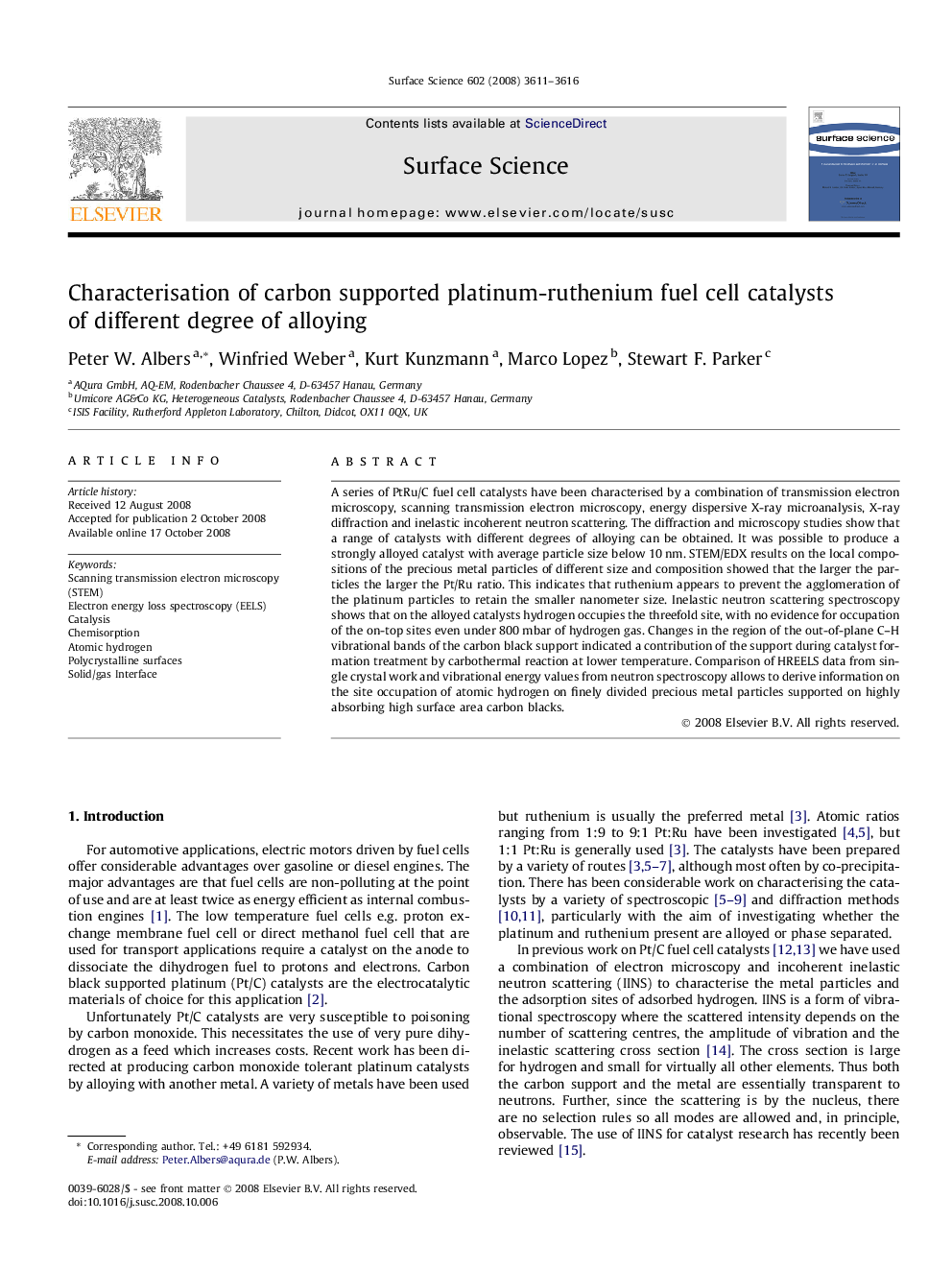| Article ID | Journal | Published Year | Pages | File Type |
|---|---|---|---|---|
| 5424170 | Surface Science | 2008 | 6 Pages |
Abstract
A series of PtRu/C fuel cell catalysts have been characterised by a combination of transmission electron microscopy, scanning transmission electron microscopy, energy dispersive X-ray microanalysis, X-ray diffraction and inelastic incoherent neutron scattering. The diffraction and microscopy studies show that a range of catalysts with different degrees of alloying can be obtained. It was possible to produce a strongly alloyed catalyst with average particle size below 10Â nm. STEM/EDX results on the local compositions of the precious metal particles of different size and composition showed that the larger the particles the larger the Pt/Ru ratio. This indicates that ruthenium appears to prevent the agglomeration of the platinum particles to retain the smaller nanometer size. Inelastic neutron scattering spectroscopy shows that on the alloyed catalysts hydrogen occupies the threefold site, with no evidence for occupation of the on-top sites even under 800Â mbar of hydrogen gas. Changes in the region of the out-of-plane C-H vibrational bands of the carbon black support indicated a contribution of the support during catalyst formation treatment by carbothermal reaction at lower temperature. Comparison of HREELS data from single crystal work and vibrational energy values from neutron spectroscopy allows to derive information on the site occupation of atomic hydrogen on finely divided precious metal particles supported on highly absorbing high surface area carbon blacks.
Keywords
Related Topics
Physical Sciences and Engineering
Chemistry
Physical and Theoretical Chemistry
Authors
Peter W. Albers, Winfried Weber, Kurt Kunzmann, Marco Lopez, Stewart F. Parker,
